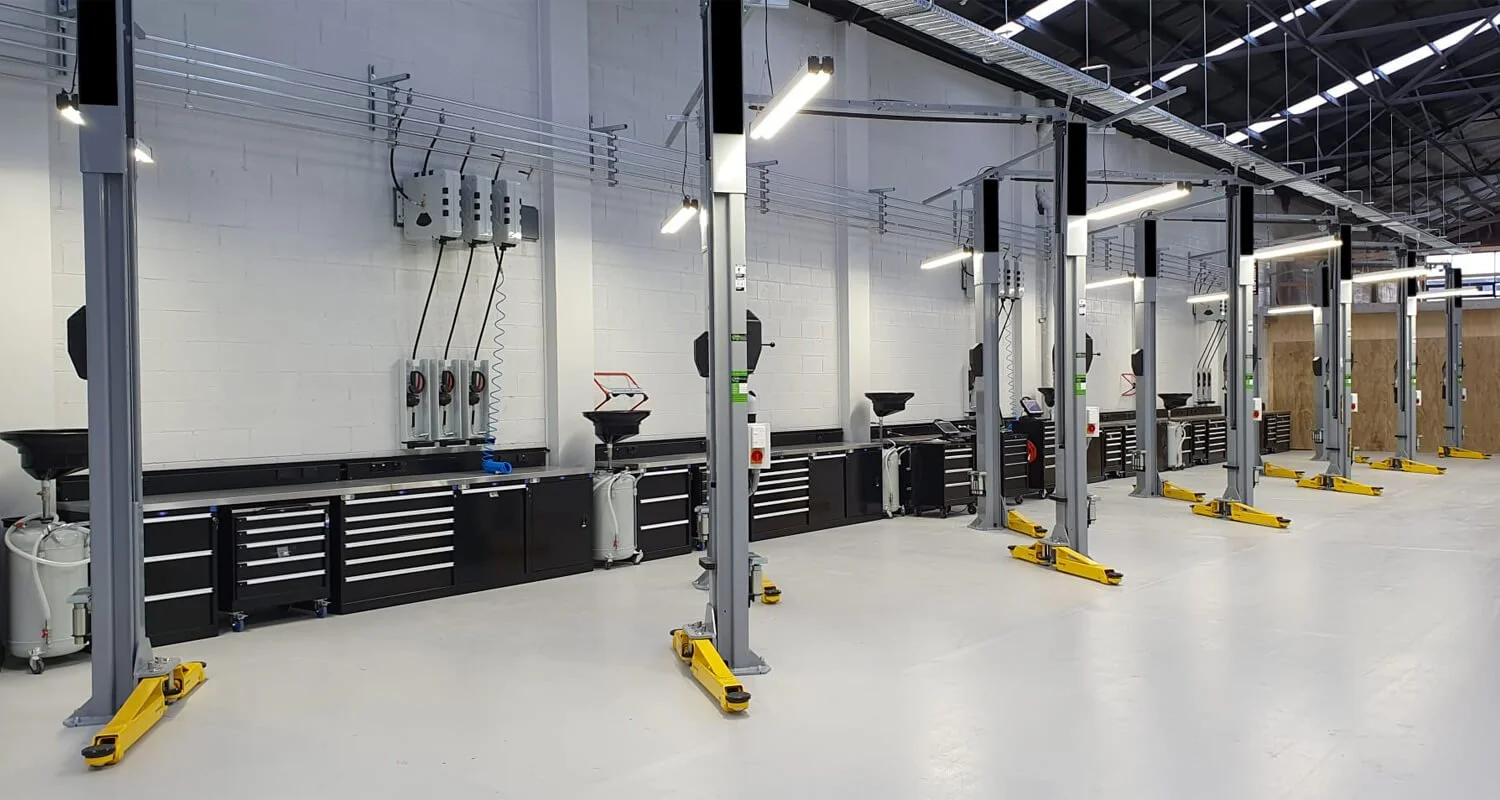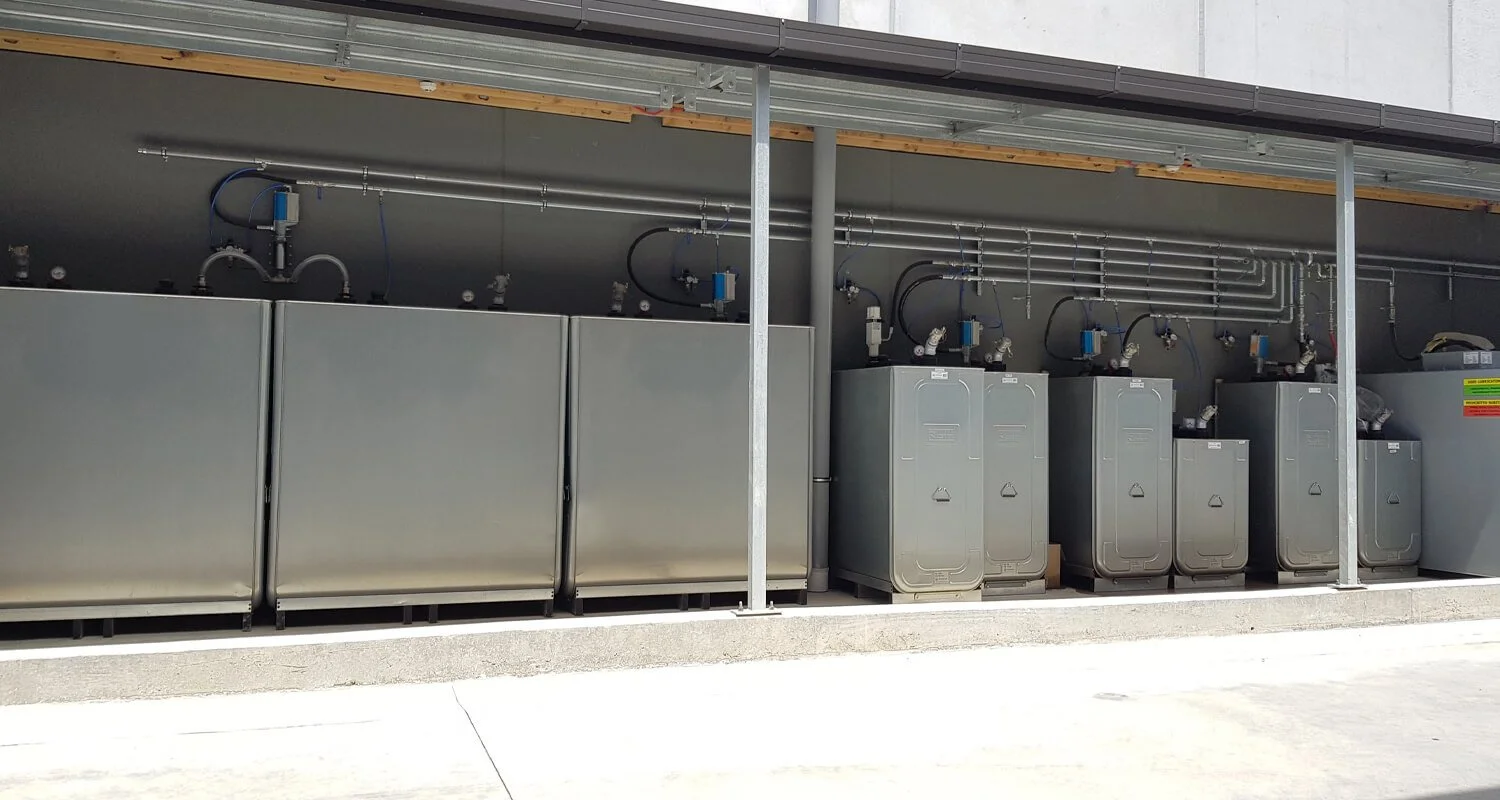How A Well Designed Lube Transfer System Boosts Workshop Efficiency
Despite workshop managers constantly looking for ways to improve efficiency, one of the most frequently used systems in the workshop is usually overlooked; the lube dispensing system. Is the design of your system hampering operational efficiency?
Virtually all managers of mechanical service workshops seem to be continuously looking for ways to improve efficiencies, and therefore increase the output of work in their daily workshop operations.
Running a mechanical workshop so that it makes a profit is not easy, regardless of whether it caters for the automotive industry, the truck & bus sector, civil & earthmoving equipment, agricultural machinery, or any other sector. It is always hard work to run a workshop at a profit which is what drives managers to look for any efficiencies which can give them an advantage, and those that find where efficiencies can be gained and implement changes accordingly are the ones who survive in the long term.
One aspect of the workshop system, which is used constantly but is rarely thought much about by the mechanics or their management, is the lubrication transfer system. As long as oil, grease, or in some cases coolant, comes out of the dispensing nozzle when it is required then the system is rarely thought about and the performance of the system is simply accepted for what it is.
So why, in this efficiency conscious environment is it accepted for a mechanic to stand around with his finger on the trigger of the oil dispensing gun for 5 minutes at a time in order to dispense a relatively small amount of oil? Or worse still, to make numerous trips back and forth from an oil bar with a measuring jug in hand in order to transfer the specified oil quantity into the engine?
The answer is usually something like this:
“Um, yeah not sure why really. That’s just how the system has always been, and it was similar to that at other places I used to work at.”
And then…
“I didn’t know that there were better options available for a reasonable price. What would you do to improve it?”
The good news is that we are well into the 21st century and there is no need to accept an oil or grease transfer system that only gives 20th century performance anymore.
Part of the problem is that many installers are still installing lube transfer systems the same way as it has been done for many decades. This is simply because that is the way it has always been done, and the people in charge are not paying proper attention to the following key areas:
The piping diameter to pipe run length ratio (which has a big impact on fluid delivery speed and pressure).
The layout of the piping to minimise disruptions to the flow of fluid.
The grade of oil or grease being pumped.
The geographic location (temperature has a massive impact on lubricant viscosity).
The specifications and performance curve of the oil pump or grease pump in question.
The size and type of connected equipment such as hose reels and dispensing guns.
The capacity of the air compressor relative to the workshop size (for pneumatic oil & grease pumps).
The design of the workshop compressed piping air system between the compressor and the pneumatic pumps.
Compact double-skinned tanks in a lube store
What do we recommend for a more efficient oil dispensing or transfer system?
To get to the question above about what we recommend for faster lubricant dispensing, the fact is that the best gains are to be had when the whole system is designed and installed correctly.
The actual transfer piping is usually the largest component of the grease or oil transfer system.
Therefore, when a new workshop is being built, or a new lubrication system is being installed, it is imperative for the long term efficiency of the workshop that the system is specified and installed in a manner that matches the requirements of the business.
For example, a heavy machinery or agricultural workshop is going to be pumping far higher volumes of oil per dispense than a car workshop. With this in mind, the oil dispensing system needs to be designed with much greater emphasis on delivering high flow, and also automatic shutoff systems.
Electronic oil management systems allow the amount required to be set, and then left to dispense the oil and shut off at this pre-set amount while the mechanic continues with his work. These systems can allocate the oil dispensed directly to the job.
The required flow rate for an automotive workshop is going to be much less. In applications like this, which do not typically require high flow rates, the system investment cost for a properly specified system is usually hardly any higher than installing a system which ultimately gives second rate performance.
A lube system install should last for decades, and for a system that is being used every day the workshop is operating, that adds up to massive time savings.
So What About Improving The Performance In An Existing Oil Distribution System?
This needs to be looked at on a case by case basis to see what is currently in place in terms of the piping and the oil dispensing equipment such as pumps, hose reels, and dispensing guns, and on the grease equipment side the capability of the existing pump is the primary thing which needs to be analysed.
At Advance Fluid Control, our technicians are experienced in offering solutions to these types of issues, and we work with the customer to improve the performance as much as possible within the limitations of the existing system and within the budget set by the customer.
As the preferred lubrication system installer for many of the major oil companies in New Zealand, AFC is recognised in the industry as not only the stockists of the largest range of lubrication equipment in the country, but also are privileged to have a great team of highly talented personnel who are renowned for their high level of expertise in both system design, and specification of the right equipment to meet the customer’s requirements.
Our dedicated installation team is committed to providing the best end result for the client, while our valued after-sales service personnel provide the support which has earned the trust of numerous large corporate clients nationwide.
Get in touch with us today to discuss your application, and our team will start work on the path towards making your workshop dispensing operations more efficient, and paving the way for boosting your future profits by increasing productivity.



